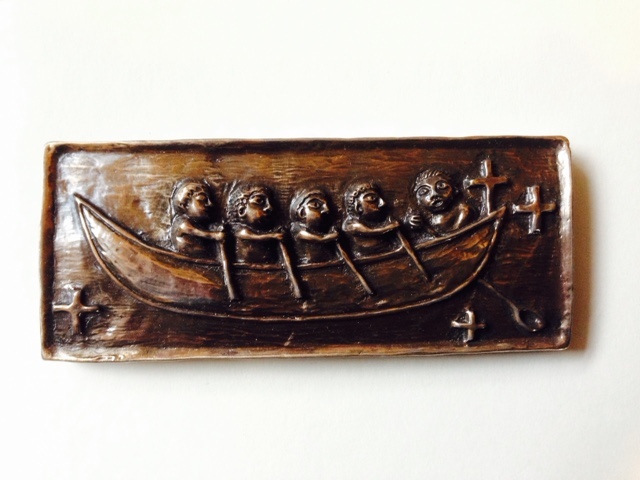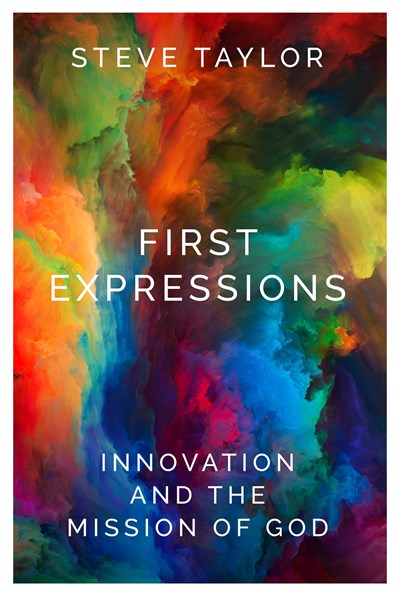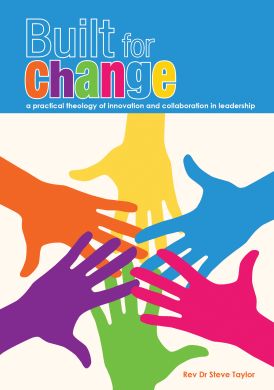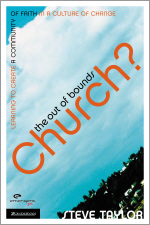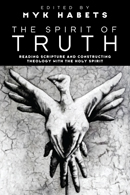Monday, November 22, 2010
Putting legs on the local: fresh expressions in South Australia
On Saturday, I’m involved in this …
What is a fresh expression? How do they emerge? What is the role of sponsors? How do we help the dreamers? How do we support fresh expressions well? What is happening on the ground in South Australia? We’ll be grappling with these questions and more at this Fresh Expressions tasting day, designed to stimulate discussion and action.
The day will include 3 “fresh expressions of mission” telling their story, their struggles, their learnings. We will talk in groups about best practice – how best to support a fresh expression, how best to dream a fresh expression.
27 November from 11am – 3.30pm at Christ Church, Wayville (26 King William Rd). Hosted by Fresh Expressions Synod of South Australia Taskforce. More info: Al Dutton 8236 4271
As mentioned here
Wednesday, November 17, 2010
Spirit walk: a great example of a spiritual takeway
This is fascinating example of spirit2g, of offering spiritual takeaways.
From the creative, missional mind of Ben Edson, (who planted Sanctus, a Fresh Expression in Manchester) it’s linked with the Manchester Mind Body Spirit Fair and involves six locations around the city centre broadcasting six meditations. Participants collect a set of headphones and a map from the ‘Spirit of Life’ stand and then go on a 30 minute pilgrimage interacting with the urban environment, opening themselves to glimmers of the Divine.
And more (from here)
The meditations, of both words and music, will provide a unique soundscape for the site this year, reflecting on both the site location and also on a particular stage of the silent journey
I love how it’s urban and outdoors. I love how it lets the person set the pace. I love the tactility of it. All I’d want to add is some way for people to engage and enter conversation. Perhaps this happens as the headsets are returned.
Monday, November 15, 2010
spirituality of blood and bone: another fresh expression
Some mates are web-journalling their guerrilla garden attempts in Christchurch. Currently the virtual looks much more impressive than the real, but knowing the rainfall of Christchurch and the power of spuds and rhubarb, I’m sure it will change.
 I do think that gardens make an excellent place to ground (pun intended) a fresh expression. I’ve blogged before about
I do think that gardens make an excellent place to ground (pun intended) a fresh expression. I’ve blogged before about
- the spirituality of composting (here)
- the spirituality of gardening (here and here)
- about a gardening centre as a future church model (here)
- about an outdoor faith indoors (here)
- about how we brought back the harvest festival at church last year in response to the Global Financial crisis and as our families headed back to the garden (here)
- a funny story that emerged because we as a church gave out vege plants at our annual Spring Clean community contact day
- about why I’m a vegetarian (here)
- about how much (little actually) land you need to feed a family of 3 (here)
Here in Adelaide there is even more interest in fresh food and local produce than in Christchurch. What about a fresh expression that met on Saturday while the Central Market was open, and used stations – of thanks, of fair trade justice, of community – that the thousands who attend the market could engage?
Wednesday, November 10, 2010
mission shaped church australia?
A sign, small and white, stuck on a door. An invitation to enter, to begin a conversation. The future, uncertain, the companions inside, unknown …
And so yesterday I at Uniting College hosted 11 folk, from 4 States and 1 territory, representing 4 denominations. The invitation, as the sign indicated, was to a conversation about mission-shaped church training in Australia.
The conversation was wide ranging and frank. The outcomes were for the next 12 months. To seek permission from UK to a pilot, in two places, from mid-2011 of an Australianised version of the UK Missionshaped course. One in Canberra using a more intense format over a number of weekends. Another in Adelaide weekday evenings during Semester 2.
An initial (cash) intention to partnership from five groups, with three other likely partners and an open invitation for any and all to join at any time later. A (time and skills) commitment from different folk to be part of a national team of trainers by workshopping segments, both individually and in partnership, with the intent of developing an ecumenical team of learners-together-in-teaching.
And the hope that, based on learnings from the two pilots, based on feedback from the UK, that we might look to run more courses into 2012, not only in Adelaide and Canberra, but perhaps in Tasmania, Victoria and New South Wales.
We finished thanking God for those who have pioneered before us, both here in Australia and in the UK, on who’se work we are building.
And with excitement, of being part of a broadly ecumenical partnership wanting to follow the Spirit in providing concrete mission-shaped training.
And of affirmation, that the sign on the door remains, to anyone, to enter, to join the conversation – one that us uncertain, unknown, but it does now have some companions on the journey.
I’ll keep blogging more details as they shape up; for an earlier post/invitation, see here.
Wednesday, October 27, 2010
the emerging church and the wilderness of God (old post but good post)
Back in 2004, I wrote a post titled – the emerging church and the wilderness of God. I was doing some sermon prep today and it seemed oddly appropriate, both for the sermon, for the emerging church in 2010 and for my current state of being. So I’m reposting it, for posterity’s sake ….
Christianity emerges from a wilderness spirituality;
John the Baptist, camel haired and with locust wings in mouth, emerges from the desert;
Jesus in preparation for ministry, walks into the wilderness;
Israel finds God in the desert, where in the wilderness Moses is called and a nation is shaped.
The rough places and tough spaces become the place of encounter with God.
So what is the place of a wilderness spirituality in the emerging church? A book like The Shape of Things to Come takes growth – in the early church, in China – as the benchmark. A history of vitality becomes the shaping spirituality. When the emerging church emerges from the evangelical church in the US, a history of vitality is the shaping spirituality.
So what of a wilderness spirituality? Where is the encountering of God in the rough and tough? How does the emerging church embrace the wilderness, rather than the myths and shadows of vitality.
Is it time for the emerging church to find new partners in its spirituality? Is it time to stop dreaming of early church glory and embrace God in the rough?
I wonder if this is where the experience of the de-churched becomes redemptive gift. Those who have entered the wilderness and have learnt to find God in the raw might have spiritual gifts to offer.
Wilderness God
Hidden in the deep valley
Obscured by rocky outcrop
This Advent
May we be found in Your wilderness.
(for the comments, which added some rich layers go here)
Saturday, October 23, 2010
DIY soul: a social enterprise fresh expression
Today, as I have wandered Adelaide on a Saturday, I decided I would like to open a missional social enterprise.
It is to be called DIY Soul and it’s purpose is to fund the spiritual search. It’s income would be derived from selling DIY/make your own spirituality resources. This would include
- prayer stools
- icon painting
- make your own angels
- make your own candles
- seeds for gardens of healing
- make your own journals
- books that to encourage the pursuit of Christian spirituality
It would also have a coffee machine and a few tables. Some space would be provided so that people could simply DIY in the shop. It’s community would be built around
- this DIY in the shop
- workshops on the above ie using prayer stools, painting icons, angel spirituality, sense making faith, journal writing (some people might call this pastoral care)
- coaching and mentoring (some people might call this pastoral care)
- spiritual direction (some people might call this pastoral care)
- urban retreats (some people might call this pastoral care)
- community gatherings to share food, stories and spirituality resources (some people might call this church)
I suspect that my DIY idea could initially start part-time, say 12-2 pm. So perhaps it could be staffed part-time.
It would require a venue. However there might be a few empty church buildings in Adelaide that are hardly used during the week that might be of use. They might require some alterations though. However, this would be a way for them to fulfill their mission, so they could be delighted to consider this possibility.
Friday, October 22, 2010
How real is your church?
Church is “the history of particular persons realizing by the Spirit’s gift the new potential for human nature.” A challenging quote from Ponder These Things: Praying With Icons of the Virgin
It echoed this insight by Neil Ormerod:
“major divide in ecclesiology, between those who study ecclesiology as an idealist Platonic form in some noetic heaven, and those who study it more as a realist Aristotelian form, grounded in the empirical data of historical ecclesial communities.” in The Routledge Companion to the Christian Church
The temptation to construct church in ideal forms. To deal with metaphors and images and DNA’s rather the particular communities that are with us now. If we just rearranged our DNA, if we could just start again, if we could just return to the early church, if we could just have a few more musicians or young people.
Yet the true grace of transformation is that God could take particular humanity, the reality of what is, and through that catch a glimpse of the Kingdom.
Almost, like, yes, an emerging church 🙂
So as part of prayer, I began to place particular persons, specific names, actual communities in the phrase. Church folk I have argued with. Communities I have been disappointed with. People I wish would change.
It was hard. I kept wanting to trade up for idealisms. But the Incarnation of Christ walked among the real, the local, the particular.
God, through these particular persons, unfold your new potential.
Thursday, October 07, 2010
evaluating fresh expressions september 2010 UK trip report
 I spent a very rich 7 days in the UK – London and Durham – in September, speaking, networking, participating in the Evaluating Fresh Expressions Research consultation (papers planned to be published to celebrate the re-launch of Anvil)
I spent a very rich 7 days in the UK – London and Durham – in September, speaking, networking, participating in the Evaluating Fresh Expressions Research consultation (papers planned to be published to celebrate the re-launch of Anvil)
For any interested, here is my report, which does include a page of my reflections on the UK Fresh Expressions scene as I heard/experienced it.
Friday, October 01, 2010
pioneer leaders as attending to birth narratives (thanks Rowan Williams)
A few days later, I wrote a post reflecting on the need for pioneer training not as technique and structure, but as a way of deepening spiritual and emotional intelligence. I read the following quote this morning:
“And the sense Christ makes is not in his masterly reorganization of the world, his provision of explanations and programmes, but in his comprehensive loving, forgiving attention to the world that has somehow brought him to birth.” (Rowan Williams in the brilliant Ponder These Things: Praying With Icons of the Virgin
).
This fits with my presentation at the Evaluating Fresh Expressions Research Consultation, including the image that I used during the presentation, of fresh expressions emerging from the Orans icon.
Christ is wanting to be made real in the world. As Mary says yes, so to we are invited to say yes, to be part of bringing to birth fresh expressions of the body of Christ.
This is not steady as she Sunday goes leadership. This is why I major on listening and discerning in my leadership courses. In the 21st century, new forms of church are being brought to birth and we are invited to pay attention to what is being brought to birth, to recognise the contours of Christ. This is leadership that seeks to be both spiritually and emotionally intelligent.
Thursday, September 30, 2010
was tallskinny (even though a) kiwi wrong? a theology of names
Kiwi’s come in different shapes and sizes. Some come tall, others come short.
Kiwi’s can take different approaches, including to recent mission history. So with gentle reverence at the most amazing ministry of Andrew Jones AKA TallSkinnyKiwi, I’ve left a comment on his far superior blog, offering him a theology by which to repent of his decision to drop the name “emerging”!
names. in the Bible it starts with Genesis 2, humans are invited to name, to use words tdescribe what they see.
and so humans name what they see. but wait – the word “elephant” shuts out a mouse, the word “dove” shuts out a “hawk.” do we drop the words? seek the generic “animal.”
but wait. that exludes plants.
was is wrong to name – in Genesis? in recent church history? wrong to seek to describe a cultural shift? a new way of being church? an outward posture?
or might naming invite the elephant/postmodern/modern/social entreprenuer to be comfortable in their skin?
be a way of creating dialogue, extending the diversity that is God’s Kingdom dream?
steve
still
www.emergentkiwi.org.nz
(For those who like words to augment poetry, I’ve written a fuller, more personal account regarding being Kiwi, being emerging here.)
Updated: my minister adds some thoughts here.
Wednesday, September 01, 2010
Are we dinosaurs? churches in Western culture
On Friday I’ve been asked to speak with the South Australian Heads of Churches. The topic I’ve been given, for 90 minutes, is the question: Are we dinosaurs? with particular focus on the future of the church. It’s a pretty significant opportunity and my colleagues have been teasing me about the need to dig out my tie and suit!
I thought it might be helpful for the leaders if as part of the presentation (one of three parts), I sought to summarise the range of approaches being advocated. So here’s a first crack at this, in which I am playing with the dinosaur theme. What do you think? Is it a helpful framework? What approaches might I be missing?
a) Theologies of extinction
These in many ways assume that the dinosaur will die. That is accepted and is legitimised through theological reflection. An example might be Atheist Delusions: The Christian Revolution and Its Fashionable Enemies. Or it might be various theologies of exile, which are suggesting that the church is moving to the margins, and so link that with various Old Testament motifs. The danger of these is (IMHO) that these are in fact assuming that the “now” is in fact not actually home.
b) Go back: good old days theologies
These encourage a looking back in time. It might be the good old days of the 1950’s. Or it might be the early church, say pre-Constantine or in the book of Acts. It might be a moment of liturgy, for example the Radical Orthodoxy movement and the Tridentine mass. They often trade on a fairly romantic notion.
c) Climate changers and Culture-makers
These include words like “Fresh expressions” and “Missional Church.” They point to a changing climate and encourage the church to adapt. Often they have a missionary view of history. One way to categorise them is in terms of theology and missiology. So much of the Emergent church conversation in the US is a call for a new theology, while much of the fresh expressions conversation is a call for a new missiology.
Tuesday, August 31, 2010
rolling our story with God’s story: Biblical story cubes
Storycubes has got all sorts of church and worship possibilities. The instructions are simple:
Roll the Cubes. Begin with ‘Once upon a time’ and tell a story that links together all 9 face-up images and spark your imagination.
The possibilities are endless.
- throw them and invite people to weave some of the symbols into their story.
- throw them and invite people to weave some of the symbols into a Biblical story.
- Play a what happened next, using the symbols to storytell an Acts 29, or a Mark 17 ie the chapters after the chapters that are written.
- You could make your own cube, for example an angel for the gospel of Matthew, lion for Mark, the ox for Luke, the eagle for John. Then throw the gospel cube plus the nine and invite people to think of, and then share, a story from the gospel that uses that symbol.
- Or your own cube that has an angel, a mountaintop, a forest. Use these to invite personal/group sharing – a mountain top moment ie when you were at your best, a dark forest moment ie when you were at your most scared, an angel moment ie when something happened you couldn’t explain.
Why? It invites creativity and imagination and humanity around the weave of God in our lives and the Biblical story.
I think I might just buy one for the upcoming National Biblical Storytelling gathering here in Adelaide (Sept 24-25). It would be a fun addition to my workshop, helping people tell their story and God’s story.
Monday, August 30, 2010
evaluating fresh expression birth narratives
In a few weeks I’m due to head to the UK, to take part in the Evaluating fresh expressions research consultation in Durham.
Which means some preparation! Back in 2001, as part of my PhD study, I interviewed various UK folk in regard to the alt.worship movement. Questions like
- outline your involvement
- in what ways do you see contemporary culture influencing you
- how accessible is (should) worship be
- how would you describe the place of mission and faith contextualisation
I ended up attending 10 UK alt.worship services, interviewing 17 people/groups (early pioneers like Late, Late Service, Visions, Dave Tomlinson) and talking to 9 more. It was fascinating stuff, but in the end my PhD simply got too big, and so I had to leave all of this research behind.
Now some 10 years later, I’m wondering if this stuff might be useful. So I have begun to dig out the tapes. I’ve heard the scrape of coffee machines in London cafes, footsteps echoing through church halls in Hackney and tea being poured in Northern England. Sure, 2001 is so last century. But I’ve found some great quotes:
“One of the things we learnt was that you need quite a lot of determination and quite a lot of encouragement if you want to be given the space to do something new within the church.”
“The very fact [evangelicalism] has been formed by the book speaks volumes about the kind of cultural baggage evanglicalism has.”
And some great questions being raised: What does sustainability look like and who’se responsibility is it? Does it matter if new forms are not longer with us? Is “surviving as Christians and living faith authentically within late-twentieth century London” less missional than “being a compassionate local presence working for peace and justice within the community”?
Whether I have the time to turn all this primary data into a research presentation I’m not sure. Whether I have the time to construct a thesis that can honour these voices, connect with the Fresh Expressions literature that began to emerge 5 years later and still say something helpful remains to be seen.
But today I feel like I’ve been at table with some real heroes, some outstandingly creative, missional pioneers.
Friday, August 27, 2010
fresh expressions adelaide vision day: putting legs on the local
Key words: dreamers and sponsors, wonderers and strategists
Key sense: taste
Key question: How can fresh expressions emerge within and alongside local congregations, agencies, schools ?
Had an excellent 90 minutes planning a (1st ever?) local Adelaide Fresh Expressions vision day with the Synod Fresh Expressions Core team. Put a ring around November 27, 11-3:30 pm, Christ Church Uniting, Wayville. Having had a swag of outside input on Fresh expressions, this day is ideal for local communities thinking about putting local legs on local fresh expressions.
Programme (draft):
11-12 pm – Introducing Fresh expressions: Who, What, Where, Why, How – Steve Taylor. Being Uniting, being emerging? a CMS team
12-1 pm – Local lunch – people are invited to bring local produce to share
1-2 pm – Putting legs on the local – interviews with three diverse local fresh expressions. A rural story, an art story, a justice story (TBC). Exploring how dreamers and sponsors work in life-giving partnerships.
2-3 pm – Conversational workshop – share challenges and opportunities in conversation either with local dreamers or local sponsors.
3-3:30 pm- Space with candlelight reflections community.
